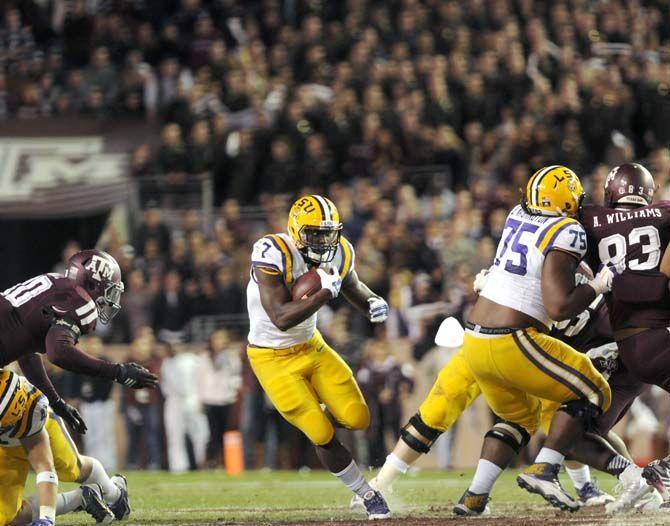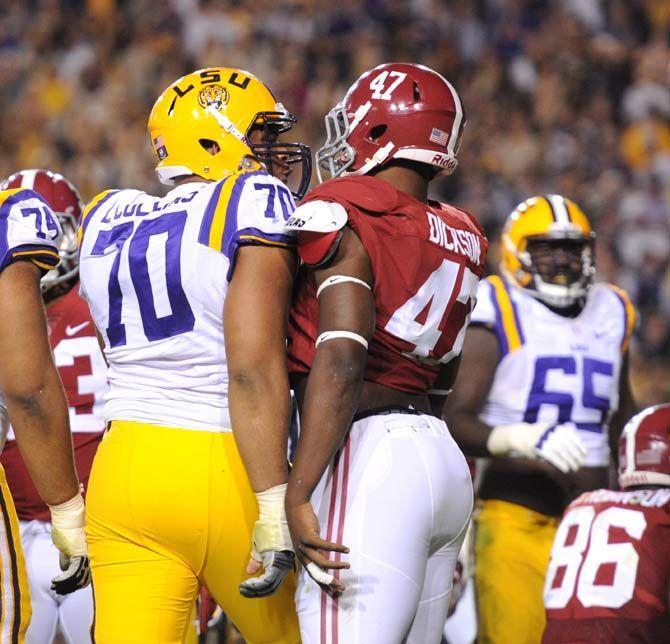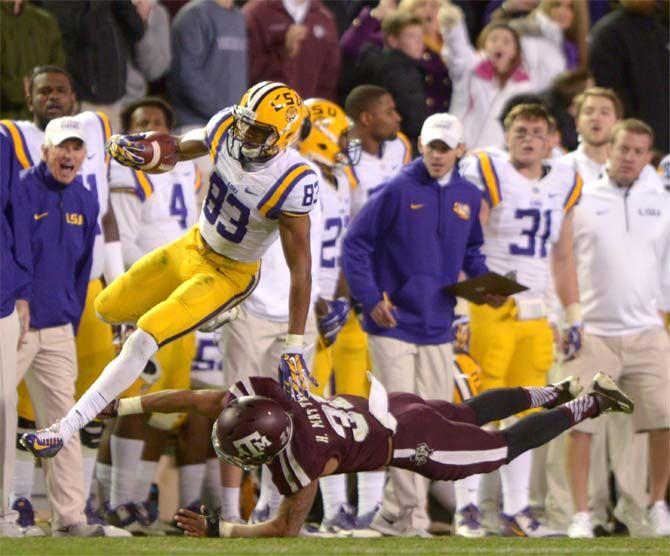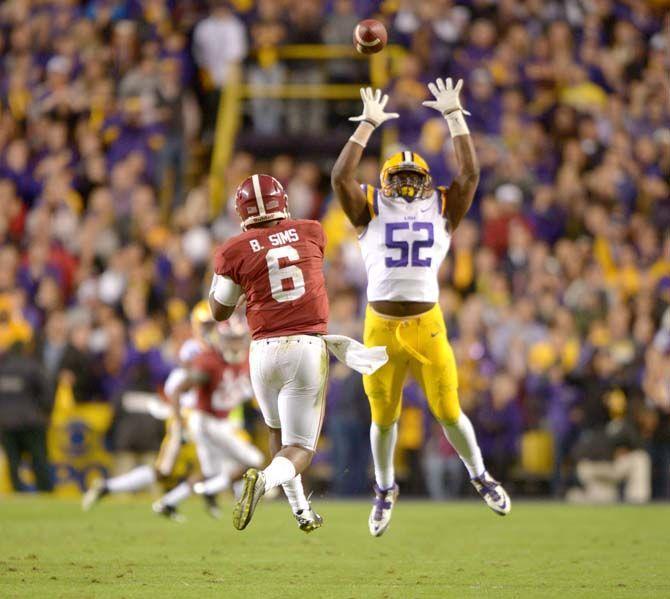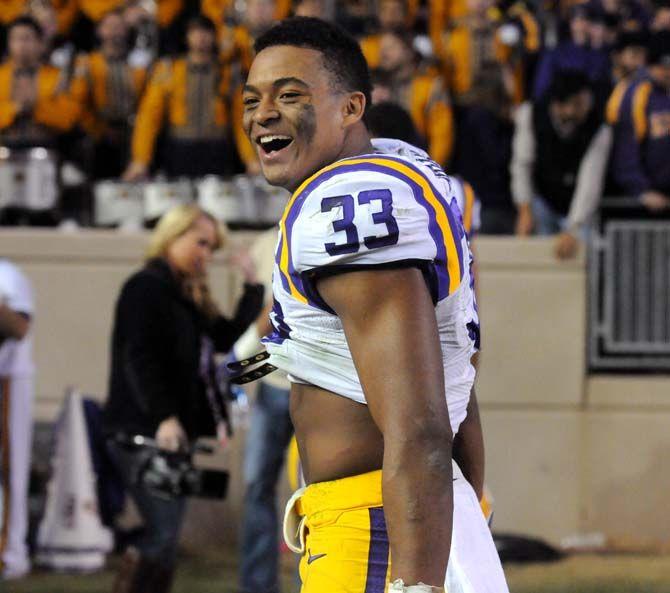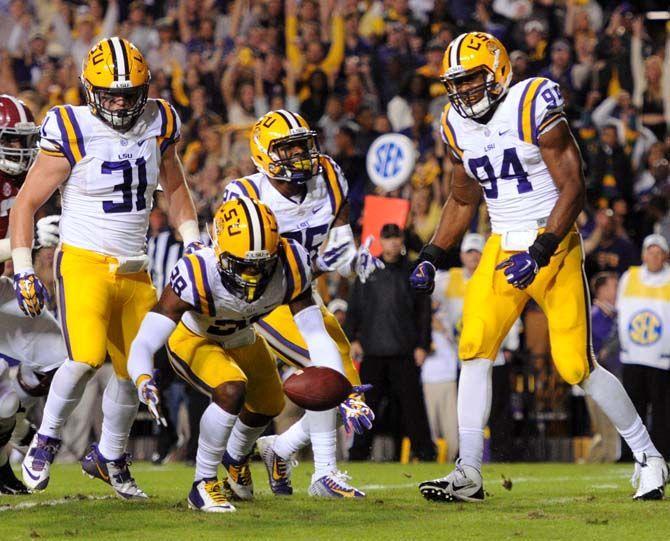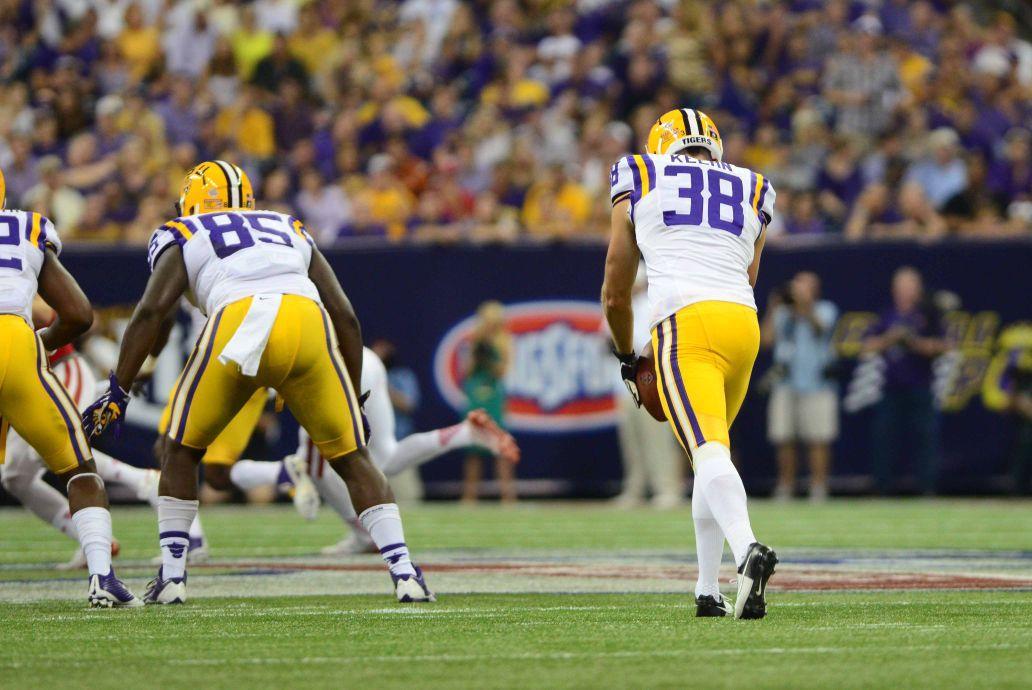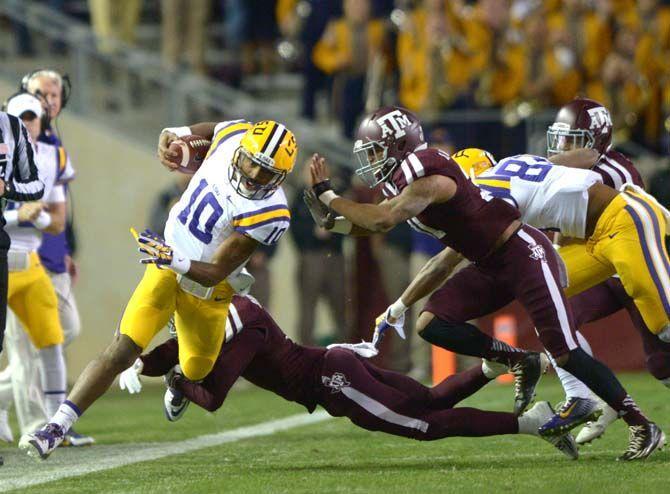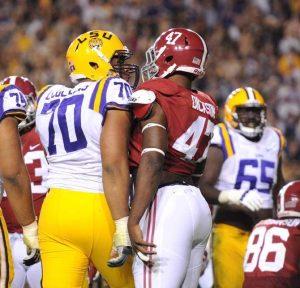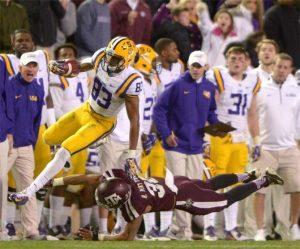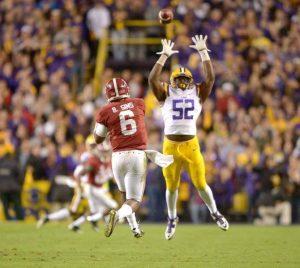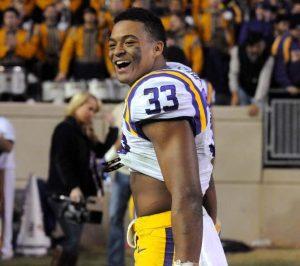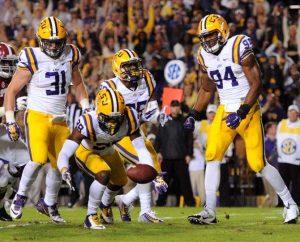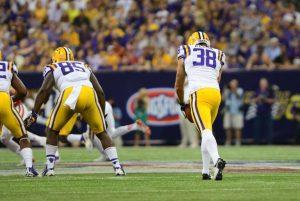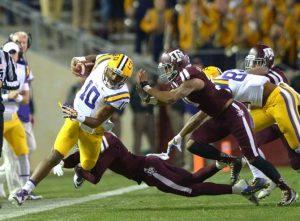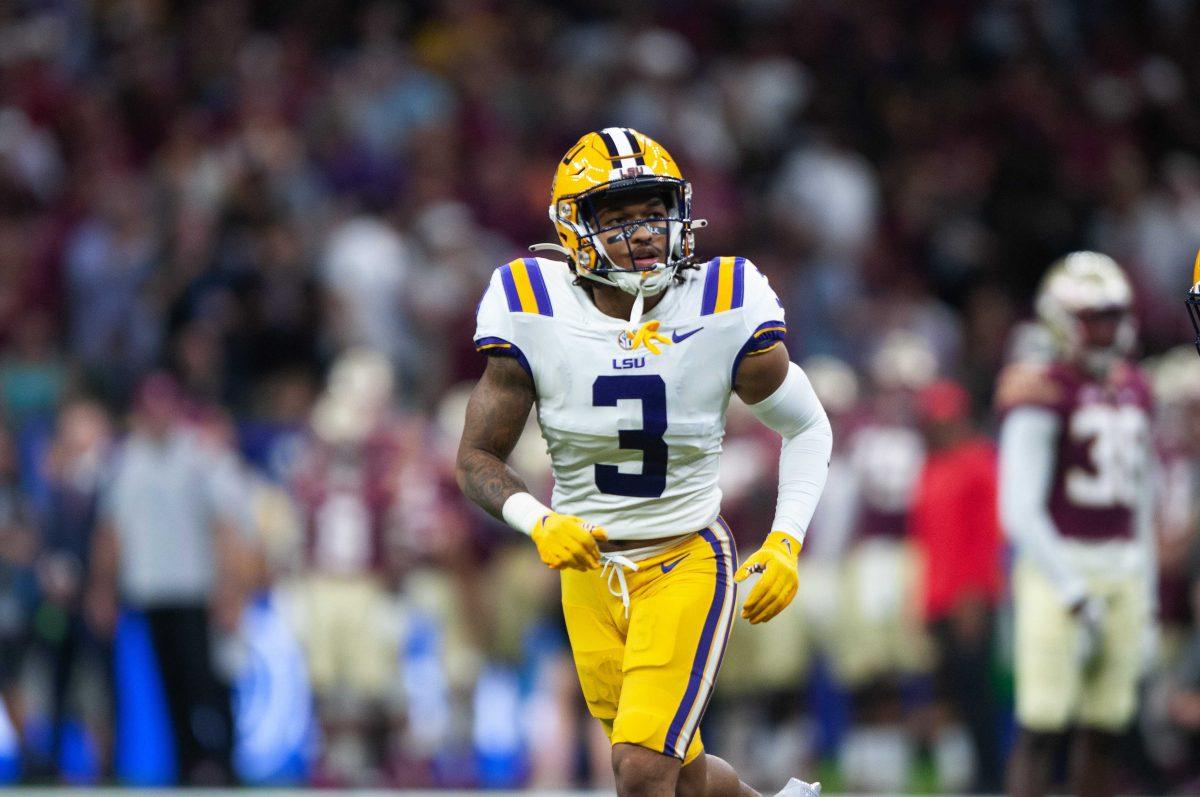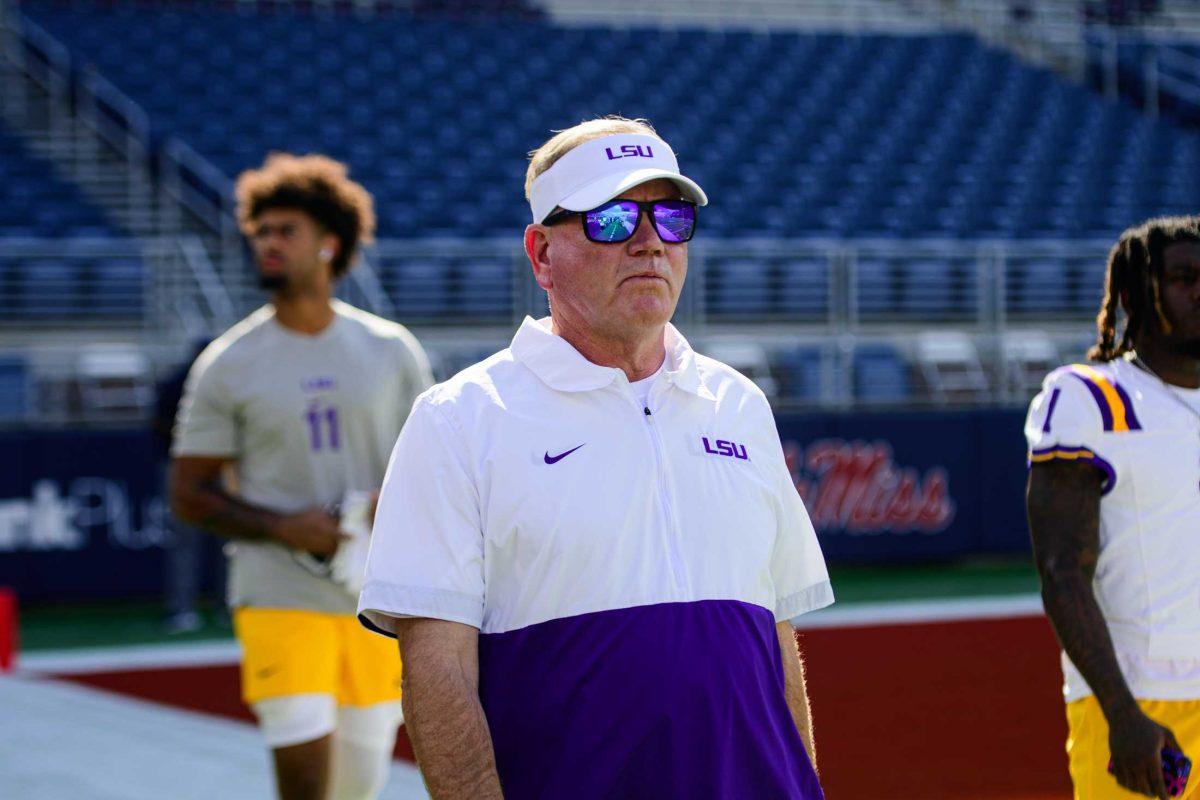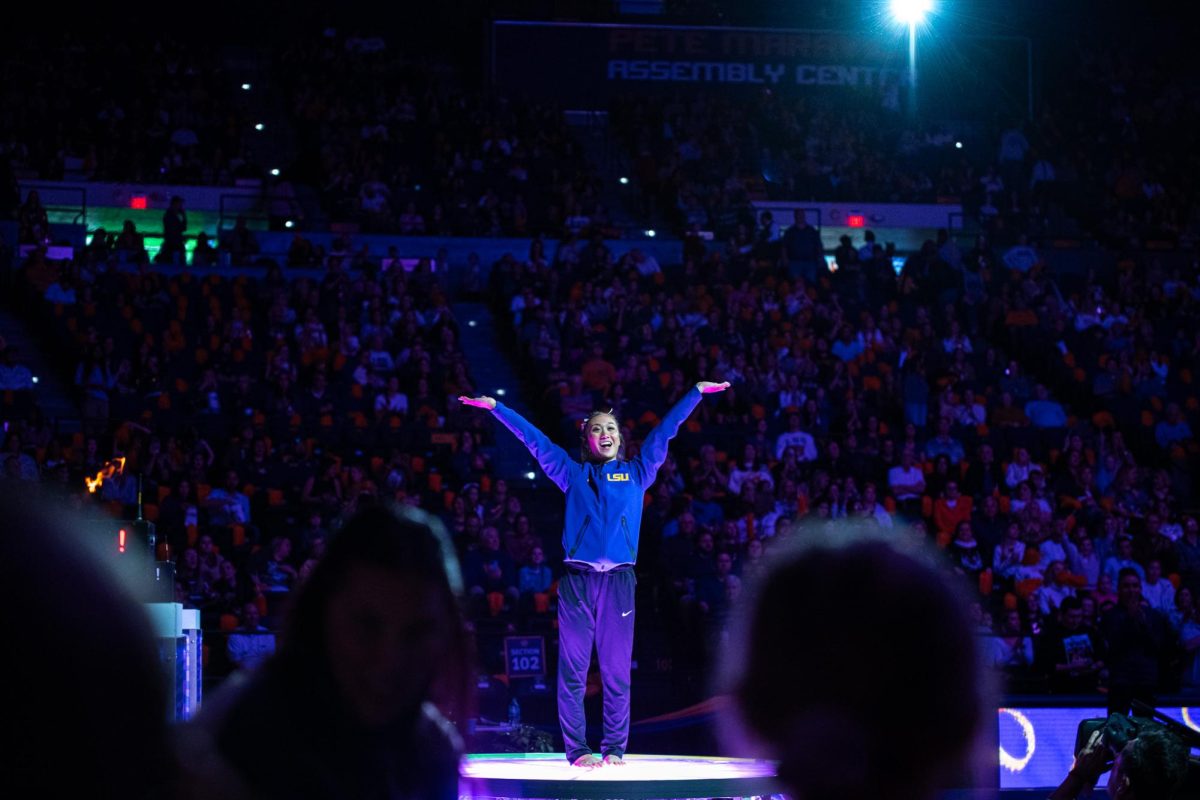Quarterbacks
Jack Chascin: C-
Jennings’ first year as the Tigers’ starting quarterback didn’t go as smooth as he had probably hoped coming into the year. The passing game struggled for much of the season with Jennings only completing 48 percent of his passes on the year. The Tigers are clearly a run-first team, but they saw a lot of close games slip away because of poor decisions by the sophomore. While Jennings may not be viewed as anything more than a game manager in a run-first offense, but his inability to make plays downfield hurt him this year. He has started to use his feet more which has opened up the offense. but if he continues to incomplete passes at the rate Tiger fans are used to, this offense will have another year of controversy ahead of itself.
Michael Haarala: B-
LSU fans always have very high expectations, as they should with a team as talented as the Tigers are year-in and year-out. However, sometimes these expectations can be unrealistic for an unproven quarterback like Jennings. In his start at the Outback Bowl, Jennings gave fans a glimpse into what he is capable of. Although he didn’t live up to many fans’ expectations this season, his numbers show growth and a decent performance for a young quarterback. His passer rating of 115.32 puts him in the top 100 quarterbacks in the nation and is close to that of Missouri quarterback Maty Mauk, who has led Missouri to the SEC Championship game. Jennings can only go up from here.
Tyler Nunez: D
LSU exits the 2014 football season with just as many questions at the quarterback position as it started, if not more. The Tigers finished the regular season dead last in the Southeastern Conference in passing yards per game, and while Anthony Jennings spent most of the season in the starting role, he hasn’t made a convincing case that he should remain in that role in 2015. Both Jennings and freshman Brandon Harris are extremely young to face the pressure of being a starting quarterback at a top-tier program, but both of them were given the opportunity and neither rose up to the occasion this season.
Running Backs
Chascin: B
Fournette showed sparks of greatness during his freshman campaign, trucking and spinning past defenders on numerous occasions. Fournette’s highlight plays show why he was heavily recruited out of high school. But in his first year his impact was sparse due to struggles with offensive coordinator Cam Cameron’s scheme throughout much of the season. Fournette is going to be a great player moving forward, but he needs to be correctly utilized in the future. Other than Fournette, it has been an on to the next one mentality in the backfield. Fellow freshman Darrell Williams has been effective in his limited role, and with 4-star prospects Nick Brossette and Derrius Guice committed to LSU for next season the Tigers backfield is in good shape.
Haarala: B+
As soon as Fournette announced his decision to come to LSU, the Buga Nation hype train gained major steam. When he said he would win a Heisman and a national championship with his teammates, some scoffed while LSU faithful bought in to the belief. Although neither of the two happened, Fournette did put up impressive numbers for an 18-year-old kid just out of high school. With 891 yards on 176 carries, he proved he could be a threat and a semi-elite back in his first season. His eight touchdowns ties him with Alabama star T.J. Yeldon. Although Fournette wasn’t anywhere close to a Heisman this season, he built a solid base for a Heisman campaign in a coming season and LSU fans should be excited about his bright future with the program.
Nunez: B
High school star Leonard Fournette had a bit of a wake-up call early in the season, but found his stride in conference play and will finish earning more than five yards per carry. Behind him, veterans Terrence Magee and Kenny Hilliard provided solid support behind him, and Darrell Williams proved to be a surprisingly viable option when needed. Fournette will face a real test next season, as LSU will lose half of this stable to graduation.
Offensive Line
Chascin: B
The offensive line went through enormous growing pains early in the season, struggling against its first two power conference opponents in Wisconsin and Mississippi State. LSU gained a total of only 205 yards in those two games while giving up six sacks. After the rough start, LSU began to figure out its scheme under first year offensive linemen coach Jeff Grimes and dominated both on the ground and in pass blocking. La’el Collins had an enormous year for the Tigers and is sure to be a first round draft pick in the 2015 NFL Draft.
Haarala: B
Through the first few games of the season, the position that seemed like it would be LSU’s strongest before the season started looked like one of its weakest. It didn’t take long for the Tigers’ offensive line to work out the kinks, however. La’el Collins played like a solid first-round draft pick, Vadal Alexander at times looked like one of the best guards in the SEC and young players like Ethan Pocic got experience that will be invaluable for the future.
Nunez: B+
The formula for LSU’s offensive line this season was pretty simple: If Elliott Porter was able to play, it was fine. If not, the Tigers struggled to move the ball on the ground. Through the dog days of SEC play, LSU dominated on the ground and controlled time of possession with long, punishing drives. Senior La’el Collins improved his draft stock with an impressive season, making a case for players returning to LSU for their senior season.
Wide Receivers
Chascin: D
If it wasn’t Dural, it wasn’t happening. LSU receivers got close to nothing in terms of receptions this season due to Jennings inability to further progress in his reads. Jennings seemingly only looked for Dural when they called a pass play. Trey Quinn and Malachi Dupre played limited roles in the passing game when called upon.
Nunez: C
LSU’s receivers did not have a ton of chances to catch passes, but with the exception of sophomore Travin Dural, the Tigers’ young receiving corps dropped too many of the opportunities it did have. Jennings and Harris seemed to have a lack of options all season, as Dural earned almost 39 percent of LSU’s receiving yards.
Haarala: C+
As a receiver, it’s hard to have a stellar season when the quarterbacks can’t and don’t throw. It’s also hard for freshmen Trey Quinn, John Diarse and Malachi Dupre to put up any numbers when the ball goes to sophomore Travin Dural almost 50 percent of the time. Dupre did shine in LSU’s failed comeback to Mississippi State, but the rest of his season was lackluster at best. Quinn had opportunities to make big plays for the Tigers, but many of the chances ended.
Linebackers
Chascin: B+
The defense got abused in the rushing game early in the season from teams like Wisconsin and Mississippi State, but after Kendell Beckwith replaced D.J. Welter things began to turn around. The Tigers became more steady against the run with a bigger more explosive body with Beckwith. Mixed with Kwon Alexander on the outside, the Tigers grew into one of the best defense’s in the SEC.
Nunez: A-
Kendell Beckwith replaced senior D.J. Welter midway through the season, providing a spark at the position LSU had previously been lacking, especially against the run. Between Beckwith and junior Kwon Alexander on the outside, the Tigers developed one of the better linebacking groups in the SEC, both against the run and the pass
Haarala: B
Another group that had a somewhat slow start, the linebackers become much more cohesive when Kendell Beckwith took over D.J. Welter’s role. Kwon Alexander and Beckwith combined for 147 tackles and made the unit not only one of the best groups on the LSU roster, but in the SEC as a whole.
Defensive Backs
Chascin: B+
The Tigers played lock-down coverage for much of the season, limiting opposing quarterbacks to less than 200 yards passing in all but three games this season. Corners Jalen Collins and Tre’Davious White dominated opposing receivers by limiting their big play ability. Freshman safety Jamal Adams burst onto the scene playing with added energy and intensity, finishing with 56 tackles on the year.
Nunez: A-
2014 marked the return of DBU at LSU. After allowing 197.5 yards per game in 2013, the Tigers stifled opponents through the air this season with the SEC’s No. 2 pass defense, cutting their opponents receiving yards by 18 percent to per game to 162.3. Sophomore cornerback Tre’Davious White emerged as a top-tier pass defender, and freshman safety Jamal Adams lived up to the recruiting hype and earned a starting role near the end of the season.
Haarala: B+
The numbers speak for themself: 162.3 passing yards allowed per game, 5.4 yards allowed per attempt and nine touchdowns allowed through the air. Jamal Adams, Jalen Mills, Tre’Davious White and Jalen Collins each played to their strong suit and became very cohesive as a group. They combined for 10 interceptions and shut down star receivers like Alabama’s Amari Cooper.
Defensive Line
Chascin: C
The defensive tackles were LSU’s downfall early in the season, which became apparent when Mississippi State came into Baton Rouge and torched the Tigers’ defense. After another poor performance against Auburn, the Tigers’ interior defense began to grow and in recent games has become a strong suit. The pass rush lacked for most of the season but that was more schematic than anything else. All in all, an average year for the defensive line.
Nunez: C-
LSU’s biggest defensive question mark coming into the season began the season as a liability, but steadily improved throughout the season. While veterans junior Danielle Hunter and senior Jermauria Rasco played well on the outside, opponents dominated the Tigers’ shallow interior early in the season. The Tigers lacked a significant pass rush, finishing 13th in the SEC with 19 total sacks. But as the season progressed, the defensive line began to rely on its shut-down secondary and focus on stopping the run, leading to solid performances late in the season.
Haarala: C+
Danielle Hunter, Jermauria Rasco and Christian LaCouture each had a season to be satisfied with. Although they didn’t have sack production and ranked 69th in the nation in tackles for loss with 69, the defensive line helped LSU finish seventh in the SEC 143.5 rushing yards allowed per game.
Special Teams
Chascin: C
Special teams has been a whole lot of up and down for LSU this season. From the return game to the field goal kicking, it has been an inconsistent season. Not much happened in the return game, minus a Tre’Davious White punt return for a touchdown against Kentucky. Punting was a plus for LSU this season because of Jamie Keehn’s ability to channel a lot more Good Jamie than bad. The Tigers’ most shaky aspect was its field goal kicking. Colby Delahoussaye got off to a hot start early before missing three field goals in two games, giving him a seat on the bench in favor of Trent Domingue before coming back in to kick the game winner against Texas A&M.
Nunez: C+
There seemed to be a reversal of roles as the season went on for LSU’s special teams units. Punter Jamie Keehn struggled with a few shanks in his first few games this season, while place kicker Colby Delahoussaye continued his hot streak from last season. But while Keehn improved, Delahoussaye lost his touch near the end of the season, going 4-for-8 in LSU’s last four games. White struggled as a punt returner for most of the season — despite his return for a touchdown against Kentucky — and Fournette was merely average on kick returns.
LSU football team graded by The Daily Reveille football beat writers
December 1, 2014
LSU freshman running back Leonard Fournette (7) runs the ballduring the Tigers’ 23-17 victory against Texas A&M on Thursday, Nov.27, 2014 in Kyle field.
More to Discover



